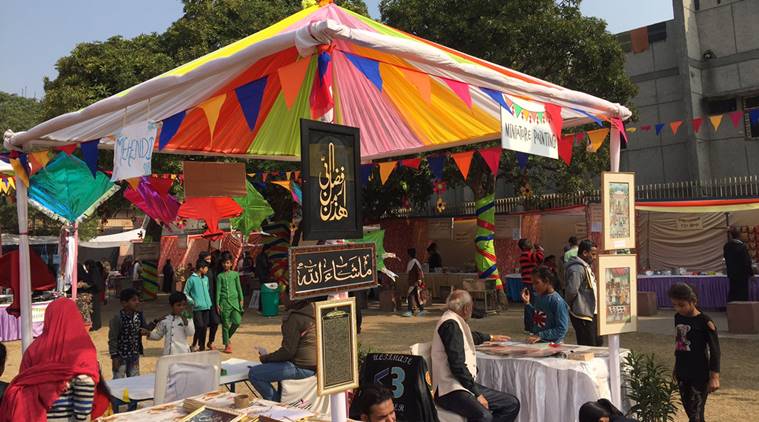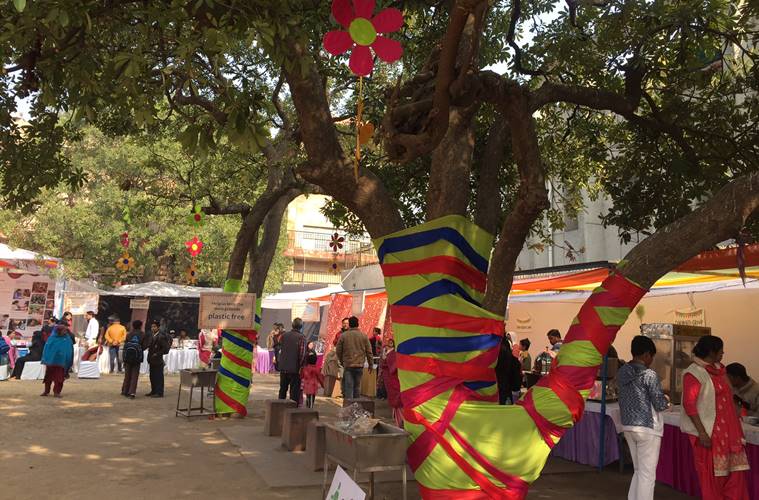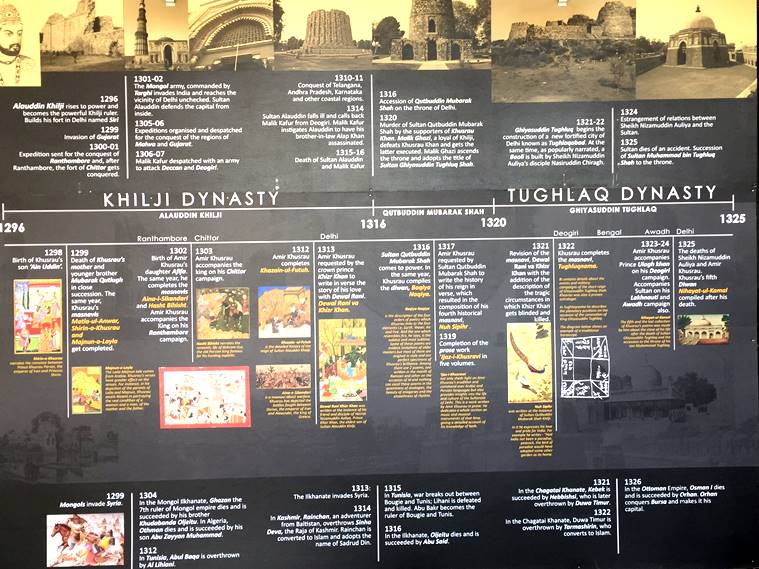- India
- International
When the Nizamuddin Basti Mela brought alive 700 years of tradition
Among the several initiatives, a major one is the annual Apni Basti Mela which was organised from December 21 to 23. It celebrated the food, art and music of Nizamuddin.
 Buried here is also, Amir Khusrow, the saint’s favourite disciple.
Buried here is also, Amir Khusrow, the saint’s favourite disciple.
Bustling streets, narrow lanes, enormous flocks of people and animals moving together in synchrony, loud chatter and a perpetual aroma of delicious biryani and kebabs are some of the highlights of the Hazrat Nizamuddin Basti in Delhi.
This description more often than not would translate to chaos, however in case of this basti, these are the very aspects that are strangely welcoming and uplifting. The locality is predominantly a Muslim one with a small percentage of Hindus and Christians. The gallis are cramped with hawkers selling garlands, incense, bags and shoes, jewellery and silver utensils among other products.
The basti is named after the Sufi saint, Khwaja Nizamuddin Auliya, who is buried in the heart of the village in a dargah. People from all faiths come here for its calm, peaceful ambiance. An old man at the dargah, who was diagnosed with cancer, found renewed energy here, and testifies to the many others who arrive ‘sick’ or ‘possessed’, and find healing here.
Buried here is also, Amir Khusrow, the saint’s favourite disciple. The baoli here is not without memories for children who have see it change, from the clear water to the murky state it exists in today. A legend that is often heard is of the making of the baoli, which was being built around the same time at the Tughlaqabad fort, commissioned by Ghiyas-ud-din Tughlaq, in the 14th century. Labourers would work both at the fort and the baoli, much to the ire of the Emperor. To put an end to this the king banned the sale of the oil which was used to light lamps that aided the workers to work at night in Nizamuddin. It is believed that as a response the saint set fire to the water in the baoli, which provided enough illumination for the workers. It’s believed that Tughlaqabad was cursed, and it faced issues of construction and water shortage.
 The locality is predominantly a Muslim one with a small percentage of Hindus and Christians.
The locality is predominantly a Muslim one with a small percentage of Hindus and Christians.
Sukanya Amir, who came to the basti as a child, says that the reason for the large population in the area was because people wanted to be physically close to the saint. Her father was one such believer. The desire to be close to the saint extends beyond living near the dargah. People also wish to be buried near him. It is for this reason that Mirza Ghalib, the famous 19th century poet and a known devotee of the saint, was buried close to the dargah.

Walking through the lanes, one finds scattered, unidentified tombs probably across centuries. It is also not uncommon to have graves inside homes. Upon being asked if it feels odd to live with a tomb inside a home, Sukanya said, “Jaise aapke ghar mein sofe aur tv normal hain, waise hamare liye kabar. Bachpan se dekhe aa rahe hain aur ab aadat pad gayi hai. (Sofas and TVs are normal in your home. The same way, tombs are in ours. We’ve seen them around us since our childhood and now we are used to them).”
The Hazrat Nizamuddin Basti has seen nearly 700 years of tradition and cultures. People from different regions have come and settled around the dargah bringing a little of their own heritage. It is important that the amalgamation of these diverse cultures, which has been adopted in the area, is preserved and protected alongside the monuments and history of the region. The Aga Khan Foundation is engaged in a robust restoration programme in the locality since 2007.
Among the several initiatives, a major one is the annual Apni Basti Mela which was organised from December 21 to 23. It celebrated the food, art and music of Nizamuddin. Organised in the Outer Park of the basti, this is not a location Google maps recognises. One must navigate through the lanes of the village to find their way from the dargah to reach the park.
 The basti is named after the Sufi saint, Khwaja Nizamuddin Auliya, who is buried in the heart of the village in a dargah.
The basti is named after the Sufi saint, Khwaja Nizamuddin Auliya, who is buried in the heart of the village in a dargah.
Colourful handmade decorations on trees and poles provided the perfect aesthetic for a bright and lively village fair. Several stalls selling handicraft items, local ayurvedic products, wooden utensils, Urdu calligraphy frames and mouthwatering Mughlai food could be found. The large number of school students kept themselves engaged with games such as live snakes and ladders and hop-scotch.
A stall attracting large crowds and attention was the Insha-e-Noor stall. Insha-e-Noor is an NGO which encourages the women living in basti to be financially independent by involving them in the making and selling of products such as diaries, key chains, earrings, dream catchers, table clothes and other such artefacts. These can be made at home or at their collective workplace. The degree of flexibility and independence provided finds many takers in the basti.
A stage was also set up where school children enacted plays on social issues. One of the topics was ‘good touch and bad touch’, which was very relevant and informative considering the large number of children present at the fair.
Other initiatives taken up by the Aga Khan Foundation include Zaika- E- Nizamuddin to supply nutritious food to people. A workshop was organised on the nuances of the local cuisine. Sanitation, education, health, computer training, waste management and heritage awareness initiatives were also held.
Sair-E- Nizamuddin is another project which trains locals about their neighbourhood and its history allowing them to conduct tours for outsiders. At the moment, tours are available for the basti, Humanyun’s tomb and Sunder Nursery. The white marble monument, Chausath Khamba, with its lit up facade created the appropriate mood for the evening performances.
Apr 26: Latest News
- 01
- 02
- 03
- 04
- 05




































